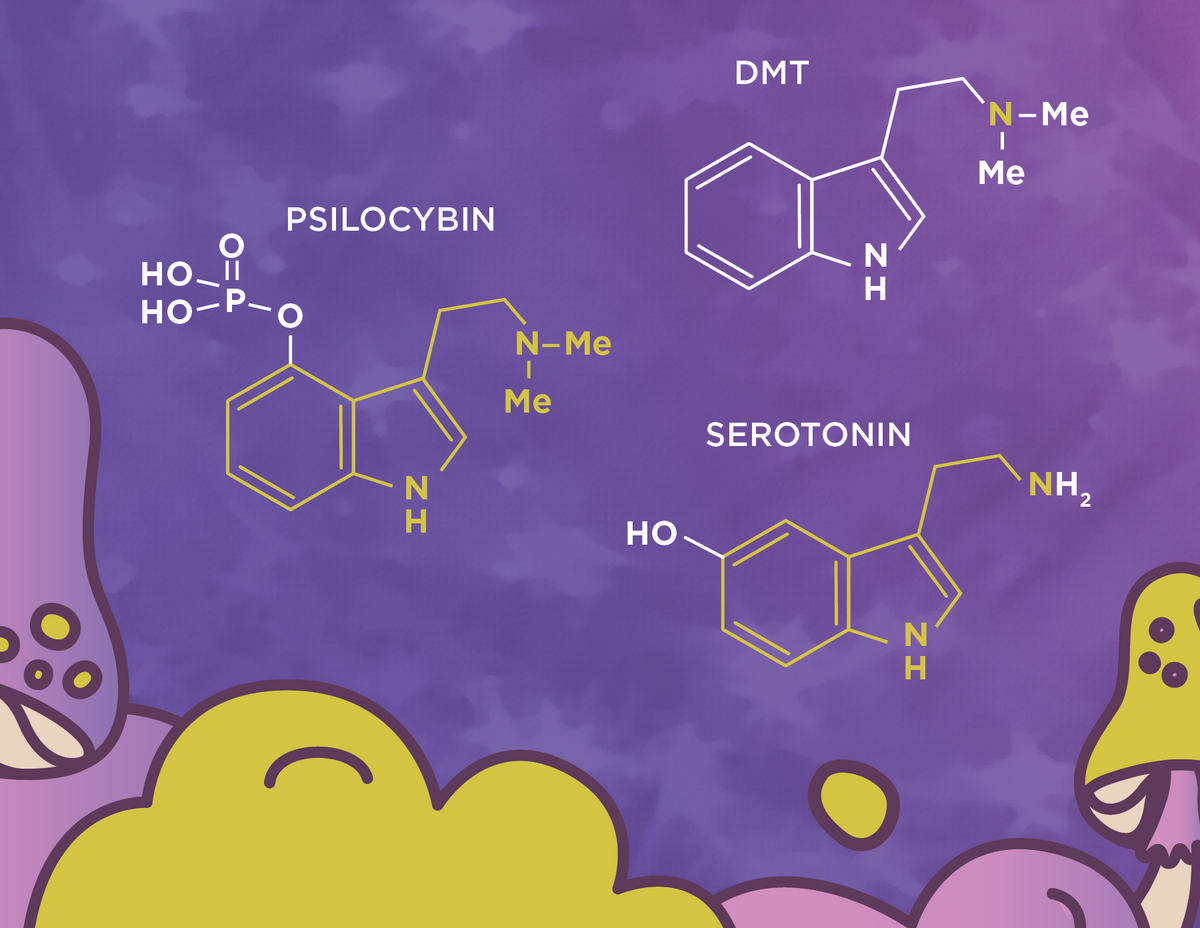Humans have consumed hallucinogenic fungi and plants for thousands of years. Many of these compounds share a common chemical structure with one another and with neurotransmitters widely produced by the human body, such as serotonin. Classic examples are psilocybin, which is synthesized by certain species of fungi, and N,N-Dimethyltryptamine (DMT), which is produced by some plants. The basic chemical structure of DMT is embedded in other psychedelics, including psilocybin.

The human body also produces DMT. Endogenous psychedelics may perform the following physiological roles:
|  MODIFIED FROM © ISTOCK.COM, Eva Almqvist, bestdesigns, designed by Erin Lemieux |
 MODIFIED FROM © ISTOCK.COM, bestdesigns, Shaiith, designed by Erin Lemieux | Fungi serve as the digestive and nervous systems |
Read the full story.
